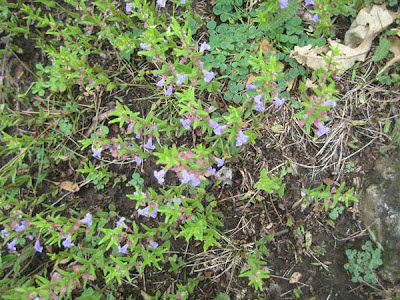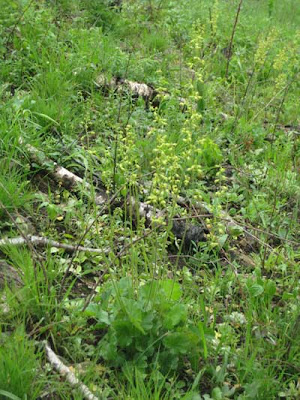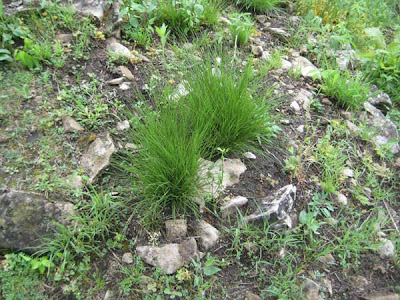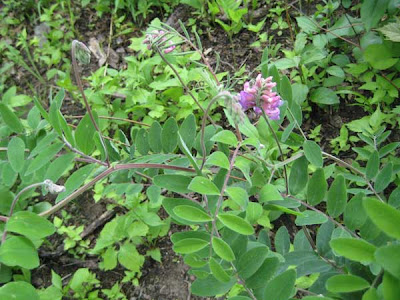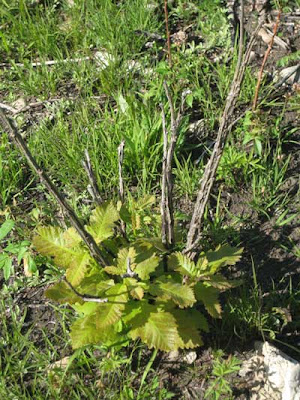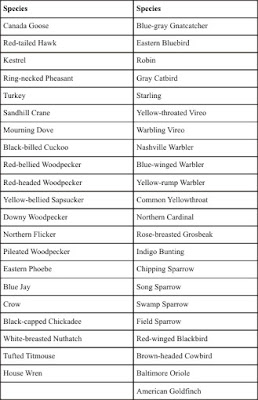All out push to eradicate invasive sunflowers

Those following these posts know that we have been battling invasive sunflowers for some years. When we began savanna restoration, we had fairly small patches of sunflowers around the edges of the woods. Since we opened up the areas to more light, the sunflowers have flourished and are now forming large patches. Many of these patches are even coalescing, making even larger patches. Taxonomically, these are mostly Helianthus divaricatus, but a few are H. decapetalus. (The photo above is of a very small clone; most we are dealing with are many times larger!)
One problem with these sunflower clones is that the individual stems are so close together that virtually no other plants can grow. They are as weedy as garlic mustard!
There is virtually no scientific literature on sunflowers as invasive species, although two venerable Wisconsinites, Curtis and Cottam, reported at the University of Wisconsin Arboretum some early observations of toxicity (allelopathy) with showy sunflower (H. rigidus; now classified as H. pauciflorus).
We fiddled around for some years trying various "band-aid" approaches, such as handpulling, mowing, and one-time spraying. All of these methods got rid of the plants temporarily, but next summer they were back again, often even stronger.
Herbicide treatment was the best procedure, but even here we did not eradicate them, probably because some of their rhizomes escape the spray, overwinter, and grow again the following spring. (This species has an impressive underground rhizome system!)
I finally realized that we had to mark each patch carefully and return to it again and again, spraying all the survivors each time. We can't leave even one plant alive, or it will serve as a source of future infestation. In a sense, we have to "sterilize" the clone. (This is also what we do with garlic mustard.)
In order to get started on this ordeal, last August (when they were flowering and easiest to see) Amanda and Marci installed permanent numbered markers at over 95 GPS'd clones. I set up an Excel spreadsheet so that we can keep track of what we do with each of these clones and used ArcGIS to map them. The photo below is a low-resolution version. I can send a higher res version to anyone interested.

For the past week we have been spraying some of these clones with triclopyr 3A (we can't do all of them this year), attempting to hit every plant. In a couple of weeks we will return to those sprayed and treat any survivors or new plants. And we'll return again sometime in late July or early August. Finally, we will return again next spring and spray again (and again, if necessary).
The value of the permanent markers is that we can be sure we are getting all the plants in each clone.
Fortunately, these plants are very sensitive to triclopyr, and show a visible response within 24 hours, so we can discern fairly easily if we missed any plants.
I may sound paranoid on this, but we have evidence that some of these clones are even able to invade prairies. One clone actually sent rhizomes from a savanna under six feet of a mowed firebreak and into one of our prairies, where it set up housekeeping. Within a year there was a patch of 200 stems.
I'll report back on this project later in the summer, or early fall.



